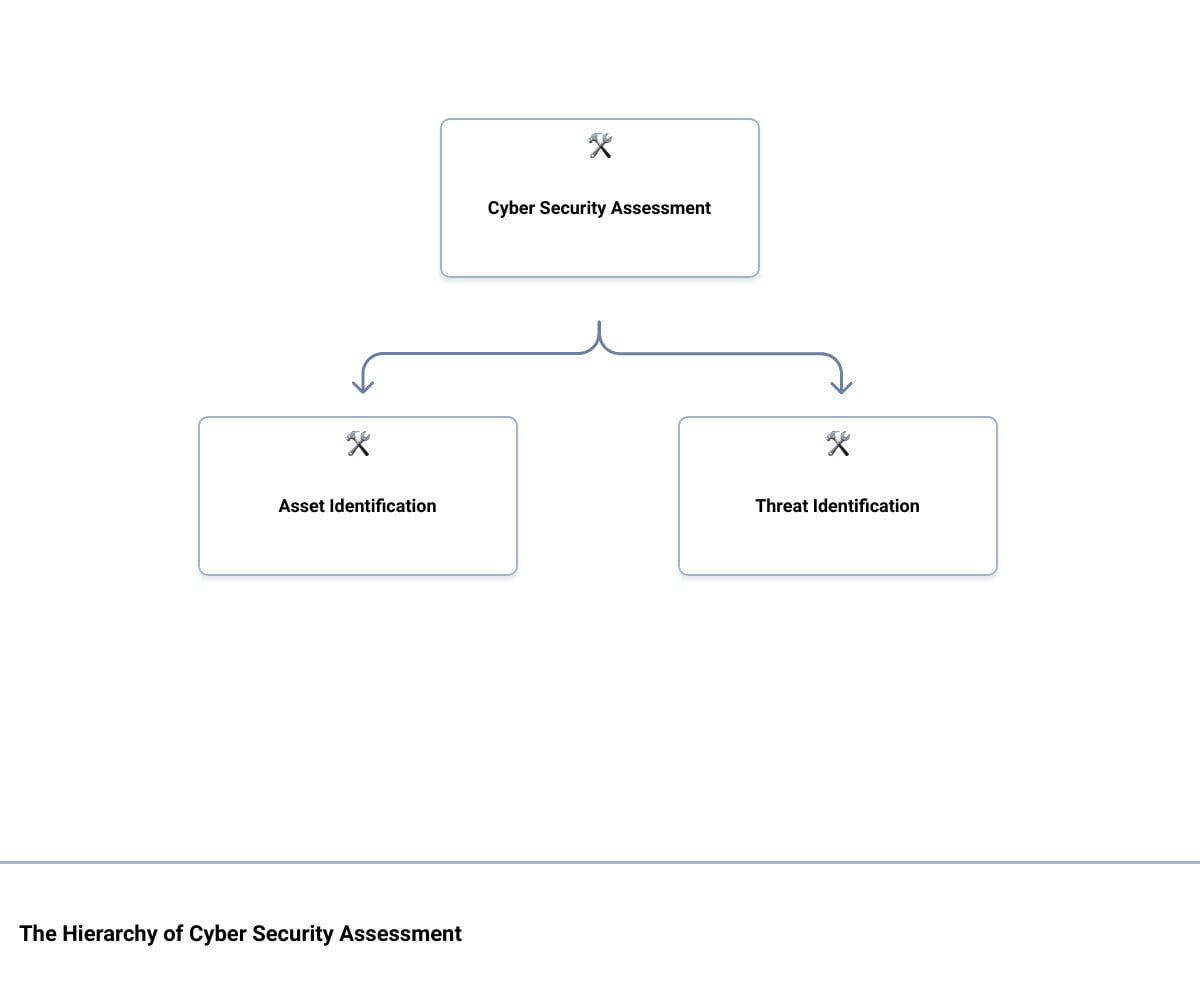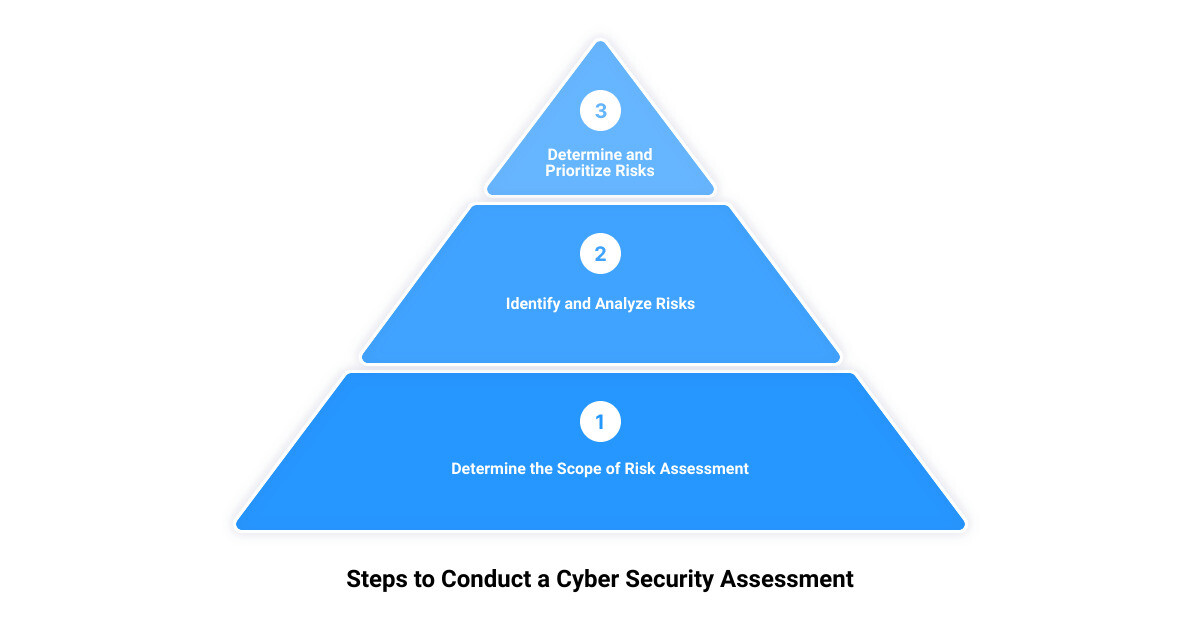In an increasingly connected business world, cyber security assessment questionnaires have become a critical tool in protecting your business’ digital assets. Upper Echelon Technology Group understands the importance of cyber security, offering personalized IT managed services that prioritize the protection of your business from cyber threats. This article, ‘Cyber Security Checkup: Unveiling the Ultimate Assessment Questionnaire’, will explore why these questionnaires are essential, how to conduct a cyber security assessment, and how to create the most effective questionnaire tailored to your business’s specific needs.
For the uninitiated, a cyber security assessment questionnaire is a comprehensive list of questions designed to examine an organization’s cyber security posture. These questionnaires are typically distributed to vendor partners and are considered a best practice in most industries today. When done right, they can illuminate potential weaknesses in your cyber security strategy and provide a roadmap for remediation.
But why, you might ask, is this so important? In today’s digital landscape, businesses are more interconnected than ever before. This interconnectivity, while beneficial in many ways, also exposes businesses to increased risk. One weak link in your network—such as a third-party vendor with lax security measures—can provide a gateway for cyber criminals to access your sensitive data.
In other words, the cyber security practices of your business partners can directly impact your own organization’s risk. That’s why having a robust risk assessment process, including the use of a thorough cyber security assessment questionnaire, is crucial in maintaining a secure business network.
Stay tuned as we delve deeper into the world of cyber security assessment questionnaires and uncover how they can be optimized to secure your business.
Understanding Cyber Security Assessment Questionnaires
What are Cyber Security Assessment Questionnaires?
Ready to dive into the nuts and bolts of cyber security assessment questionnaires? Let’s go! Cyber security assessment questionnaires are lists that are usually compiled by IT teams to help determine a company’s security and compliance posture. These lists comprise complex and technical questions aimed at identifying and addressing any potential security weaknesses within a company or its third-party vendors.
The essence of these questionnaires is to ensure that the security practices and policies of potential vendors, service providers, or business partners meet the required internal and external standards. By meticulously evaluating the responses provided in these questionnaires, organizations can gain comprehensive insights into the security posture of their third-party vendors, thereby identifying any security gaps present in their vendor ecosystem. This will prompt immediate remediation actions, ensuring the start and continuation of healthy business relationships.
Why are Cyber Security Assessment Questionnaires Important?
Now you might wonder, “Why should I bother about cyber security assessment questionnaires?” Well, the importance of these questionnaires cannot be overemphasized. They serve as an essential tool in your organization’s vendor risk assessment process by allowing you to responsibly vet vendors before proceeding with the onboarding process and granting third-party data handling rights.
Let’s put it this way – when you give a third-party vendor access to your sensitive data, you are essentially inheriting their risks. This means that if your third-party vendor suffers a data breach or other security incident, there’s a high probability that your organization’s private data will also be compromised.
A failure to manage these risks by performing due diligence and having an effective third-party risk management (TPRM) program in place could leave your organization exposed to regulatory action, financial loss, litigation, reputational damage, and even loss of existing or potential customers. Therefore, security questionnaires are not only crucial for a robust TPRM program, but they also play a pivotal role in incident response planning.
In conclusion, the importance of cyber security assessment questionnaires boils down to this: they are your first line of defense in ensuring that your service providers adhere to appropriate information security practices. Stay glued as we walk you through on how to conduct a cyber security assessment in the following section!
How to Conduct a Cyber Security Assessment
Embarking on a cyber security assessment may seem like a daunting task, but when broken down into manageable steps, it becomes a crucial tool for protecting your business. Let’s delve into the first two steps, determining the scope of the assessment, and identifying cybersecurity risks.
Step 1: Determine the Scope of the Risk Assessment
The first step in conducting a cyber security assessment is to define its scope. This means identifying which parts of your business are at risk and need to be assessed. This could include specific departments, systems, or data sets, depending on the complexity and nature of your business. It’s important to note that the scope should align with your business’s objectives and risk tolerance levels.
Think of it in terms of a medical check-up. The doctor doesn’t examine every single part of your body; instead, they focus on areas that are most likely to be at risk based on your age, lifestyle, and health history. Similarly, a cyber security assessment should focus on areas of your business that are most vulnerable to cyber threats.
Step 2: Identify Cybersecurity Risks
Once you’ve determined the scope of your risk assessment, the next step is to identify the cybersecurity risks within that scope. This is akin to the doctor identifying potential health risks based on your check-up.
To identify cybersecurity risks, you need to look at three main components:
2.1 Identify Assets
First, identify the assets within your scope. These could include hardware devices, software systems, data sets, and even human assets like employees.
2.2 Identify Threats
Next, identify potential threats to these assets. These could include everything from hackers, malware, and phishing attacks to physical threats like theft or natural disasters.
2.3 Identify What Could Go Wrong
Finally, identify what could potentially go wrong if these threats were realized. This could mean data breaches, system downtime, or even reputational damage.
Remember, identifying risks isn’t about predicting every possible scenario; it’s about understanding the most likely threats and their potential impact on your business. This information will then help you prioritize risks and create a robust security strategy in the following steps.
Conducting a cyber security assessment may seem like a complex task, but with these steps, you can begin to create a solid foundation for your organization’s cyber security strategy. Stay tuned as we delve into analyzing these risks and determining their potential impact in the next section.
2.1 Identify Assets
As we sail deeper into the vast ocean of cyber security assessment, it’s time to hoist the binoculars and identify your assets. Just like a ship’s captain must be aware of all the valuable cargo onboard, you as a business owner must know what digital assets you have that could be targeted by cyber pirates.
In the context of your organization, assets are all the resources that are critical to your business operations and contain sensitive information. These can range from physical assets like computers and servers, to digital assets like databases and software, and even include human assets such as employees with access to critical information.
The first step in identifying assets is to create an inventory. This inventory should not only include the assets themselves, but also their location, the data they contain, their owner, and their value to the organization. This comprehensive inventory forms the bedrock for the entire risk assessment process.
Using a tool like the Qualys Cloud Platform can simplify this step by providing a continuously updated view of all IT assets from a single dashboard interface. With this platform, you can get a full picture of your assets in seconds and generate reports for your team and auditors.
Remember, knowing what you have and where it is forms the basis of any effective cyber security assessment. By accurately identifying your assets, you can then move on to the next step of identifying threats, knowing exactly what you’re protecting and why it’s important. This will not only help you to prioritize your efforts but also ensure that you’re well-equipped to shield your most valuable assets from cyber threats.
So, batten down the hatches, keep a keen eye on your assets, and prepare to embark on the next phase of our cyber security assessment voyage – identifying threats.
2.2 Identify Threats
In the stormy seas of the cyber world, threats lurk beneath the surface, ready to strike unexpectedly. Identifying these potential hazards is a crucial step in conducting a comprehensive cybersecurity assessment. But how can you spot these hidden dangers? Let’s dive into the depths and explore.
Understanding the Nature of Cyber Threats
Cyber threats are potential dangers that could exploit vulnerabilities in your IT systems and networks, leading to unauthorized access, data loss, or disruption of operations. The threats can come from a variety of sources, such as malicious hackers, ransomware, malware, and even unintentional threats posed by employees or third-party vendors.
Implementing a Strategic Approach to Threat Identification
Identifying threats isn’t just about knowing what could go wrong. It’s also about understanding the likelihood of a threat occurring and its potential impact on your organization. This requires a proactive and strategic approach.
Use security ratings provided by cybersecurity-focused managed services providers like Upper Echelon Technology Group to get a quantitative measure of cybersecurity risk. These ratings are generated using non-intrusive measures to analyze open-source datasets and can be easily understood by both technical and non-technical stakeholders.
Leveraging Technology for Threat Detection
Investing in an attack surface monitoring tool can significantly enhance your ability to detect threats in real time. Tools like UpGuard Vendor Risk can provide accurate visibility into your vendors’ security postures and help you detect potential threats such as phishing attempts, malware, email spoofing, and other cyber threats before they can cause harm.
Another effective method to identify threats is by implementing SOC 2 compliance. This auditing standard ensures that service providers and third-party vendors are protecting sensitive data and can verify responses to security questionnaires, thereby speeding up the threat identification process.
Keeping an Eye on Third-Party Risks
Don’t forget to consider risks brought about by your vendors. Your cyber security assessment should also include a thorough vendor risk assessment. Remember, security is only as strong as your weakest link, and even a trusted vendor could unknowingly open the door to cyber threats.
In the next section, we will look at how to identify what could go wrong should these threats exploit your vulnerabilities. So, stay vigilant, keep your periscope up, and let’s navigate these choppy cybersecurity waters together.
2.3 Identify What Could Go Wrong
In the realm of cybersecurity, your imagination can be your greatest ally. By envisioning the worst-case scenarios, you build a comprehensive understanding of the potential risks facing your organization. Consider the impact of different types of cyberattacks, from data breaches to ransomware attacks. Ask yourself: What sensitive information could be exposed? Which critical operations could be disrupted? How would a security incident affect your company’s reputation and bottom line?
Step 3: Analyze Risks and Determine Potential Impact
After identifying potential threats and vulnerabilities, the next step is to analyze these risks. This involves estimating the likelihood of each risk event occurring and the potential impact on your organization. Remember, the impact of a cybersecurity incident is not just measured in monetary terms but can also include factors such as reputational damage, loss of customer trust, and regulatory penalties.
To perform a thorough risk analysis, you’ll need to consider both qualitative and quantitative factors. For instance, a quantitative analysis might involve calculating the potential financial loss from a data breach, while a qualitative analysis could involve assessing the damage to your company’s reputation.
Step 4: Determine and Prioritize Risks
Once you’ve analyzed the risks, it’s time to prioritize them. This involves ranking each risk based on its potential impact and the likelihood of it occurring. Risks with high impact and high likelihood should be addressed first.
However, it’s also important to consider the cost and feasibility of mitigation strategies. Some high-impact risks may be so unlikely, or so expensive to mitigate, that they are de-prioritized in favor of more manageable risks.
In the world of cybersecurity, there’s no such thing as a foolproof defense. But by identifying what could go wrong, analyzing the potential impact, and prioritizing risks, you can build a robust cybersecurity strategy that protects your most valuable assets. Remember, the goal is not to eliminate all risks, but to manage them in a way that aligns with your organization’s risk tolerance and business objectives.
In the next section, we’ll delve into the Cybersecurity Assessment Tool, a powerful instrument that can help streamline this complex process. Stay tuned as we continue our voyage through the world of cybersecurity assessment.
The Cybersecurity Assessment Tool (CAT)
In our increasingly digital world, staying ahead of potential cybersecurity threats is not just a luxury, it’s a necessity. This necessitates a robust and comprehensive approach to cyber risk management. One of the most effective tools at your disposal in this endeavor is the Cybersecurity Assessment Tool (CAT).
What is the Cybersecurity Assessment Tool?
The Cybersecurity Assessment Tool (CAT) is a dynamic resource that enables your business to gauge its cybersecurity preparedness over time. It leverages the principles and guidelines outlined in the National Institute of Standards and Technology (NIST) Cybersecurity Framework, while tailoring its guidance for the specific needs of banks and credit unions. However, the value of the CAT extends beyond these industries, and it can be a key component in the cybersecurity strategies of businesses in various sectors.
The CAT is composed of two main parts: the Inherent Risk Profile and Cybersecurity Maturity. The Inherent Risk Profile helps identify the type and level of risk associated with your business’s activities and technologies, while the Cybersecurity Maturity component assesses whether your organization’s cybersecurity controls are sufficient in managing these inherent risks.
How to Use the Cybersecurity Assessment Tool
Using the CAT involves a systematic approach and a clear understanding of your organization’s risk landscape. The first step is to complete the Inherent Risk Profile, which will help you identify your organization’s risk level across various categories such as technologies and connection types, delivery channels, online/mobile products and technology services.
Next, you move on to the Cybersecurity Maturity part of the tool. This section is designed to help you assess your organization’s maturity level across five domains: Cyber Risk Management and Oversight, Threat Intelligence and Collaboration, Cybersecurity Controls, External Dependency Management, and Cyber Incident Management and Resilience.
It’s important to note that the Cybersecurity Maturity section is not a one-size-fits-all assessment. Instead, it provides a range of maturity levels for each domain, allowing your organization to assess its controls based on its unique risk profile.
In conclusion, the CAT is an invaluable tool for any business looking to bolster its cybersecurity defenses. It provides a structured framework for identifying risks, assessing controls, and tracking progress over time. By leveraging this tool, you can ensure your organization is well-equipped to face the cybersecurity challenges of the digital age. It’s all about being proactive in your approach to cybersecurity, and the CAT is an excellent starting point. Stay tuned as we move onto the basic cyber security risk assessment in the next section.
The Basic Cyber Security Risk Assessment
Just as a doctor performs a routine physical check-up to assess the overall health of a patient, a business needs to conduct routine cyber risk assessments to ensure the health of their digital environment.
What is a Cyber Risk Assessment?
A cyber risk assessment, as defined by the National Institute of Standards and Technology (NIST), is a process used to identify, estimate, and prioritize risk to organizational operations, organizational assets, individuals, other organizations, and the Nation, resulting from the operation and use of information systems. Simply put, it’s a method of evaluating the potential vulnerabilities and threats that could compromise your company’s digital security.
The primary goal of a cyber risk assessment is to help your organization understand and manage risks, specifically those associated with your IT systems and data. It’s a critical part of any organization’s risk management strategy and protocol.
How to Conduct a Basic Cyber Risk Assessment
Conducting a basic cyber risk assessment involves a number of key steps. Here’s a simplified approach to get you started:
Step 1: Determine the scope of the risk assessment. This involves identifying the systems, assets, data, and processes that will be part of the assessment. It’s important to consider all aspects of your organization that could be impacted by a cybersecurity incident, including data, reputation, and operations.
Step 2: Identify cybersecurity risks. This includes identifying your digital assets (e.g., hardware, systems, data), the threats that could compromise those assets, and the potential impact of those threats. There are a few sub-steps involved in this:
- 2.1 Identify assets. This includes both physical assets (e.g., servers, computers, mobile devices) and non-physical assets (e.g., data, software).
- 2.2 Identify threats. Threats can come from various sources, including internal (e.g., employees, contractors), external (e.g., hackers, competitors), or environmental (e.g., natural disasters).
- 2.3 Identify what could go wrong. Basically, determine what the impact would be if the identified threats were to exploit the identified assets.
Step 3: Analyze risks and determine potential impact. This involves assessing the likelihood that each identified risk could occur and the potential impact on your organization if it does.
Step 4: Determine and prioritize risks. Based on your analysis, you should prioritize each risk based on its potential impact and the likelihood of occurrence. This helps you focus your efforts on the highest risks.
Conducting regular cyber risk assessments enables you to stay ahead of potential threats and mitigate risks before they become issues. Remember, the goal is not to eliminate all risks—that’s impossible. Rather, it’s to manage risks in a way that aligns with your organization’s risk tolerance and business objectives.
In the next section, we will delve into creating the ultimate cyber security assessment questionnaire, a key tool in your cybersecurity toolbelt.
Creating the Ultimate Cyber Security Assessment Questionnaire
Just as a doctor uses a checklist of questions to diagnose a patient’s health, a cyber security assessment questionnaire helps to pinpoint vulnerabilities in your network security. But creating an effective questionnaire is a skill in itself. Let’s explore how to create a top-notch cyber security assessment questionnaire that zeroes in on potential cyber risks.
Best Practices for Creating an Effective Security Questionnaire
Crafting a security questionnaire that accurately evaluates your vendors’ security measures can be a demanding task. However, understanding a few best practices can make this process more efficient and effective.
Firstly, align your questionnaire with industry standards. This includes regulations such as SIG (Standardized Information Gathering), CAIQ (Consensus Assessments Initiative Questionnaire), and NIST (National Institute of Standards and Technology). These standards provide a foundation of essential questions that can guide your assessment.
Secondly, customize your questionnaire to reflect your business operations. While industry standards offer a great starting point, they may not cover all aspects of your unique business. Consider adding questions that pertain to your specific industry, technology use, or data handling procedures.
Lastly, ensure the questionnaire is easy to understand. Avoid technical jargon that may confuse respondents. Clear, straightforward questions are more likely to yield accurate and actionable responses.
Sample Questions for a Vendor Risk Assessment Questionnaire
To help you get started, here are some example questions that you could include in your vendor risk assessment questionnaire:
- Do you have an established information security policy?
- Is your data encrypted both at rest and in transit?
- Do you conduct regular security training for your employees?
- How do you manage user access to sensitive data?
- What measures do you have in place to detect and respond to security incidents?
These questions are just a starting point. Remember to tailor your questionnaire to your specific security needs and concerns.
Automating Security Questionnaires for Efficiency
While creating and distributing security questionnaires manually is possible, it can be a time-consuming process. This is where automation comes in. Automating your security questionnaires can significantly streamline your information gathering process.
Services like HyperComply offer free questionnaire templates or downloadable guides, which you can use as a base for your own questionnaires. You can then customize these templates to fit your specific information security needs. This not only saves time but also ensures that you cover all necessary bases in your security assessment.
In conclusion, creating an effective cyber security assessment questionnaire is a mix of following industry standards, customizing to your specific business needs, and leveraging automation for efficiency. With these tips in hand, you’re ready to create a security questionnaire that will help identify any vulnerabilities and enhance your overall cyber security strategy.
Conclusion: The Role of Cyber Security Assessment Questionnaires in a Robust Security Strategy
As the curtains close on our exploration of cyber security assessment questionnaires, one thing is abundantly clear: these questionnaires aren’t just a fancy buzzword. They are an essential cog in the machinery of a robust security strategy. But why is that the case?
Firstly, cyber security assessment questionnaires provide a standardized approach to evaluating the potential vulnerabilities of your IT infrastructure. They systematically uncover the cracks that might be invisible to the naked eye. These questionnaires are like diagnostic tools that probe and scrutinize every aspect of your organization’s cyber security posture.
Secondly, they enable you to assess third-party vendors’ security practices. In today’s interconnected digital landscape, it’s not just your own security practices that matter. The security posture of your partners and vendors can significantly impact your own risk level. Security questionnaires help ensure that your partners are also maintaining a high level of security, thereby safeguarding your shared digital ecosystem.
But perhaps the most compelling reason is that these questionnaires provide actionable insights. They don’t merely identify potential issues and risks. They also provide a clear roadmap to address these vulnerabilities, helping you prioritize and strategize your security measures.
That said, creating and implementing effective security questionnaires is not a one-and-done task. It requires constant refinement and updating to keep pace with evolving cyber threats. It’s also a task that can be greatly enhanced with the help of experts in the field, like Upper Echelon Technology Group.
With their personalized approach to IT Managed Services, not only can they help you develop comprehensive and effective security questionnaires, but they can also support you in leveraging technology to enhance efficiency, solve technology issues, and ultimately drive profitability.
In conclusion, cyber security assessment questionnaires play a pivotal role in building a robust security strategy. They are the compass guiding your organization through the often tumultuous seas of cybersecurity, ensuring you navigate safely towards a secure digital future.








